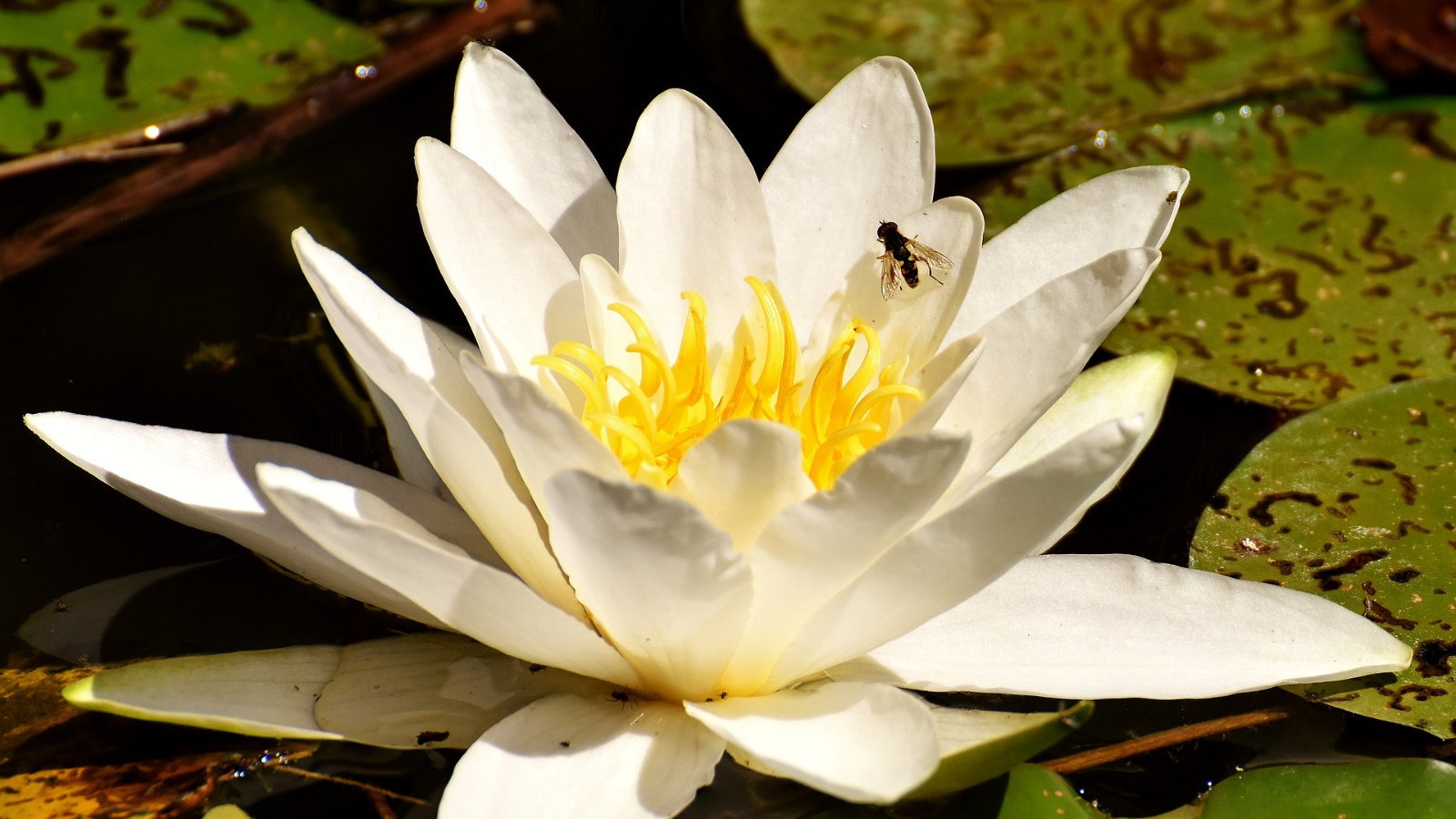This rhizomatous herb is a quintessential sight, along our waterways in the height of summer. Leaves rise up from the depths of the riverbed, with the aid of air-filled, spongy stems, to produce vast rafts of heart-shaped vegetation that, not only reduce algae in a pond, but also provide a crèche for many aquatic invertebrates and a sanctuary for young fish and frogs.
Latin name: Nymphaea alba
Identification
- Plant height: 20cms
- Leaves: Dark green and glossy. The lily leaves form a heart shape and gently curl a the edges
- Flowers: Amass of petals construct the singular flower of the water lily, producing the biggest of any British flower. The petals are generally white, with bright yellow stamens, but if crossbred with cultivated forms, produce a pale pink flower
- Habitat found: Slow moving rivers and ponds
- Flowering time: June-August
- Attracts: Frogs, Newts, Water boatmen, Dragonflies, Damselflies, Water Snails
In The Garden
This plant isn’t a good choice for container ponds, as it may block out too much light, but will do well in slightly larger ponds or watery areas of the garden. These plants tolerate full sunlight and will attract Damselflies and Dragonflies to come and take a rest on the smooth-surfaced leaves, in sunny weather.
Did you know?
- The flowers, generally close at night and may sink beneath the water surface only to emerge again the next morning.
- The roots are sometimes harvested and eaten as a delicacy, and in some parts of mainland Europe, they were considered a cure for baldness!
